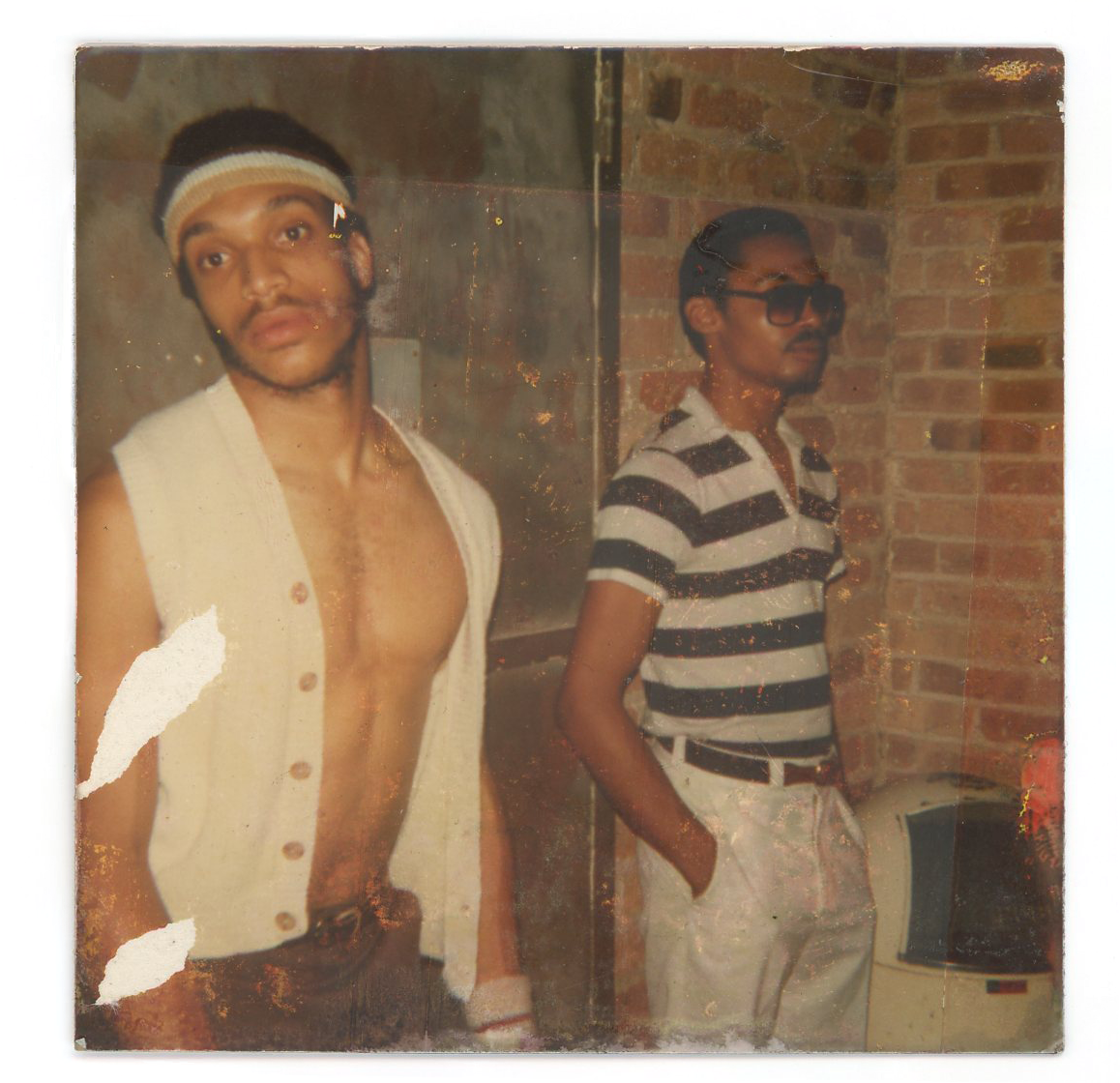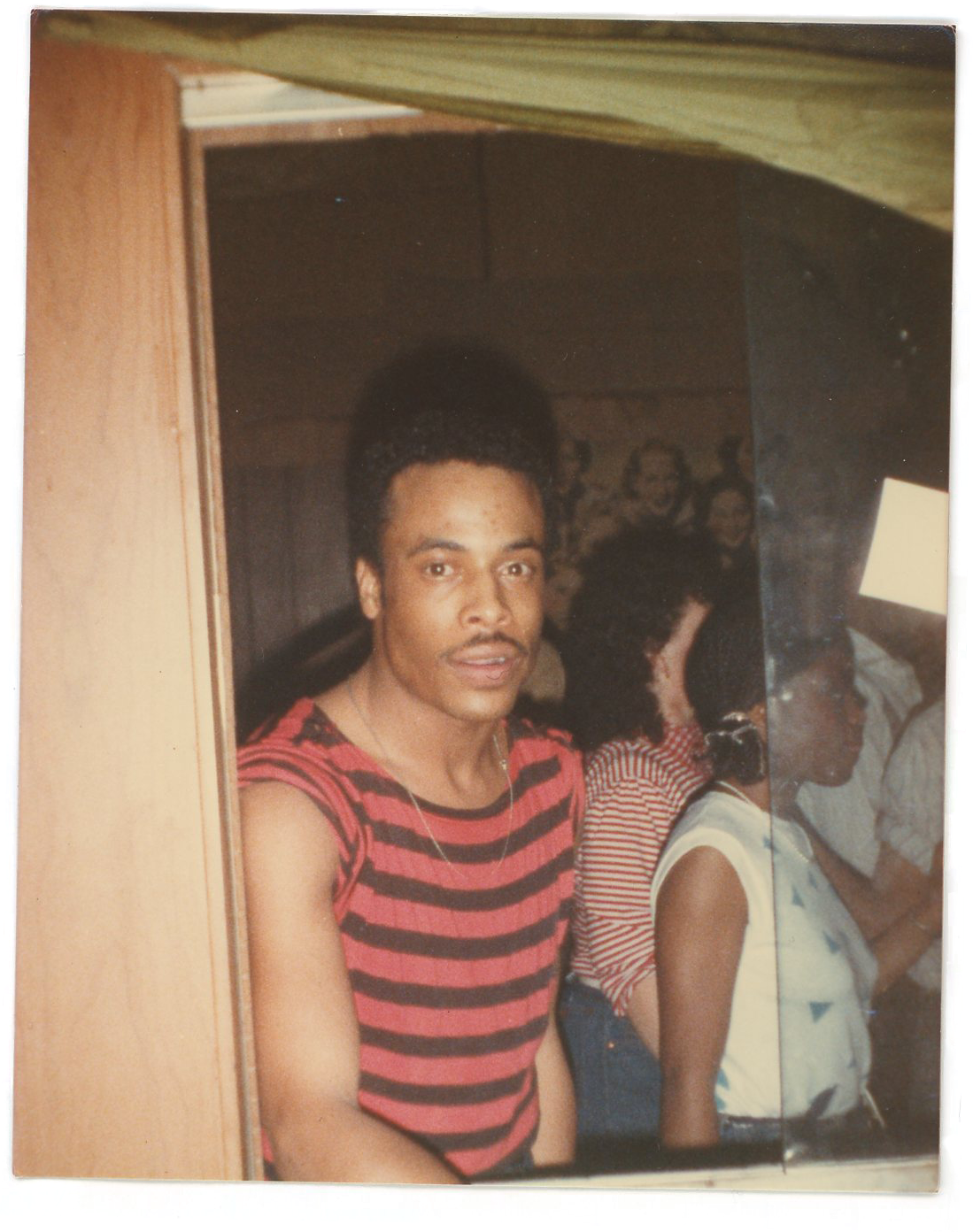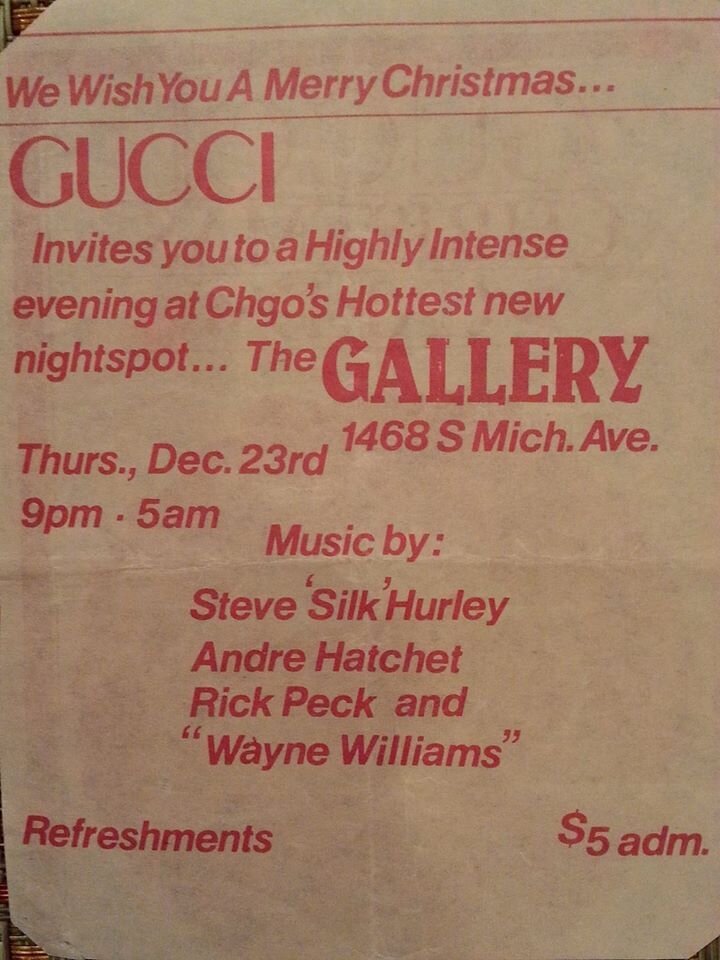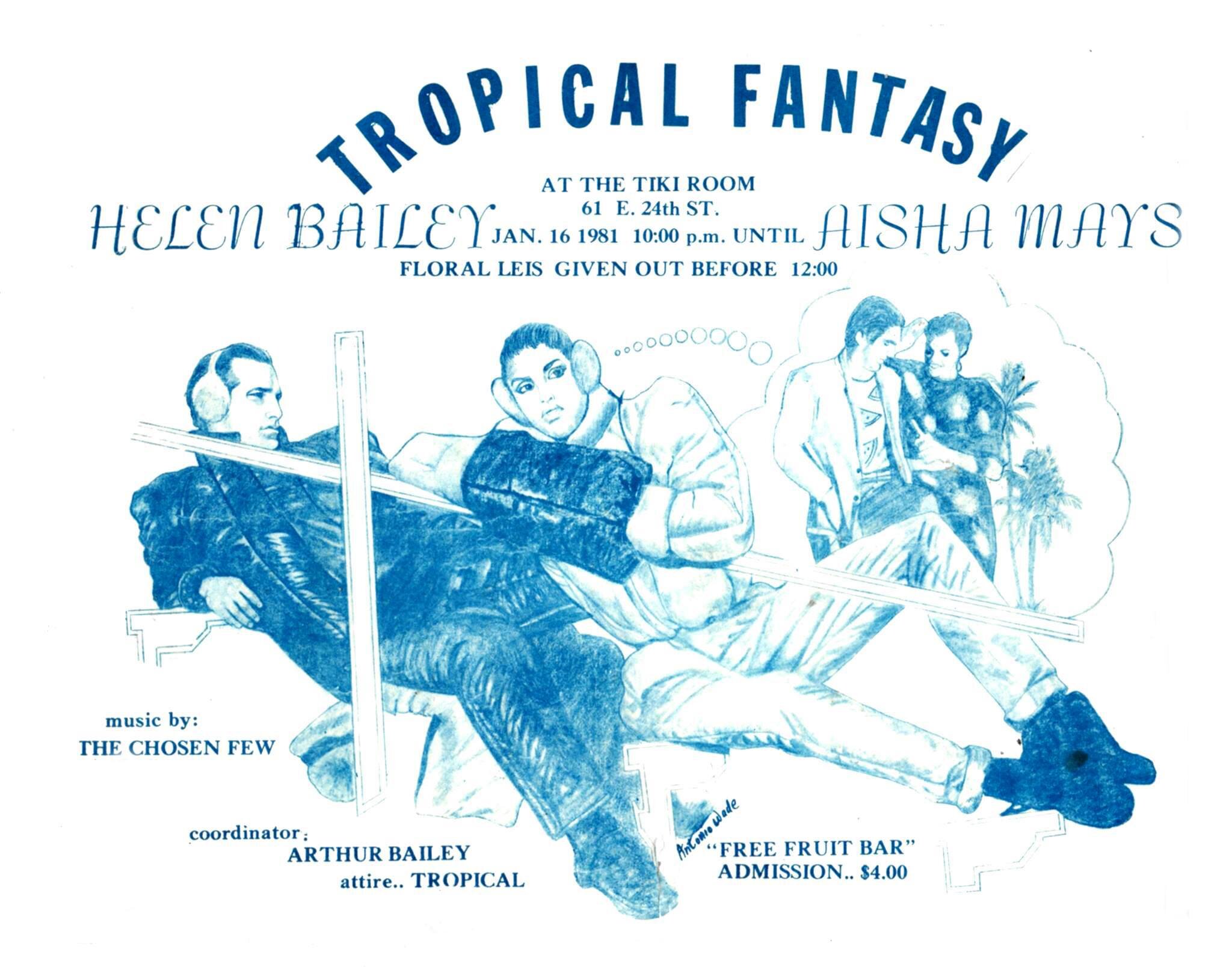
Issue No.4–1984-1990 ©FEBRUARY 2020 #312Soul Pictured: Dwayne Grant, Vince Lawrence, Eric Bell, Wayne Williams, Jesse Saunders, Duane Buford, and Mark Ruth circa 1982
As the 1980s arrived, so did another surge of artistic genius from Black Chicagoans. It began with crowded house parties on the South Side—buzz spread by word-of-mouth and flyers passed on the street—and moved into packed clubs throughout the city. This underground music scene was pulsing with dance music that mixed disco, jazz, and funk, and these genres became infused with electronica and synth. By the mid-’80s, it was officially called “house.”
Ayana Contreras shares how the studio landscape forged a new sound out of Chicago.
If music genres are defined by people and places, the first person on the house list would be Frankie Knuckles, and the place would be the legendary Warehouse, located at 206 S. Jefferson Street.
In fact, the term “house” is shorthand for the Warehouse, and Frankie Knuckles (born Francis Warren Nicholls, Jr.) was a mainstay DJ there, mixing disco, soul, and sometimes rock. Knuckles, an out gay man himself, initially drew crowds that were mostly gay Black men. But as word spread of his sonic skills—including being one of the first to add a drum machine to mixes—fans of all kinds started flocking to the Warehouse.
Wayne Williams talks about the first time he saw Ron Hardy and his two turntables.
Images from the Warehouse and the Muzik Box provided by Robert Williams.
Influenced by the likes of Knuckles, a small group of South Side DJs known collectively as the Chosen Few started their own prolific run. They were brought together by a teenage DJ-entrepreneur named Wayne Williams to meet the growing house party demand for the type of underground disco being played in gay clubs. Wayne would later go on to become a giant in the industry working with, among others, Jennifer Hudson, Aretha Franklin, and Justin Timberlake.
The rest of the Chosen Few were Tony Hatchet, Andre Hatchet, Alan King, Terry Hunter, Mike Dunn, and Jesse Saunders. Saunders partnered with young producer Vince Lawrence on the groundbreaking track “On and On.” And the Chosen Few DJs began hosting the Chosen Few Picnic & Festival in 1990, drawing more than 40,000 music-lovers to Jackson Park annually to this day.
Herb Bertha, Kirkland Townshend, Jesse Saunders, unknown, Wayne Williams, and Robert “Bat Man” Ellis
Jesse Saunders, Rory McCallister, and Vince Lawrence
Terry Hunter reflects in the early days of house parties.

Producer Chip E. also came out of this early wave of talent. His first EP Jack Trax, featuring “It’s House,” is considered a classic and reportedly is the first record to reference “House” in the title.
Chip E. with his Roland Axis-1 Remote Midi Keyboard
Eartha Kitt and Chip E. at Importes Etc. circa 1987
Joe Smooth, Lady Mia, Chip E., and Frankie Knuckles
Chip E. talks about his days working at Importes Etc., 711 S. Plymouth Court
Other major players were the venues themselves—where creativity crackled and beats and bass lines dropped. Frankie Knuckles left the Warehouse to start his own club, the Power Plant. Meanwhile, places like the Muzik Box, the Playground, the Bismarck Hotel, and Sauer’s all thumped with cutting-edge house music. With so many club spaces dedicated to inclusivity and celebration, house music proved to be a uniting facet of a segregated Chicago, welcoming people of all races, gender identities, and sexual orientations.
Sauer’s, 311 E. 23rd Street
Original party flyers

It was at Sauer’s where Lori Branch—widely considered Chicago’s first female house DJ—made her club debut.
Lori Branch would not only go on to become a staple in the Chicago music scene, but also a passionate public health advocate and HIV/AIDS activist. In addition to Branch, Toni Shelton, known as “Disco” Toni, was influential in making sure women were key players in Chicago’s house scene. A house music promoter and event producer, Shelton has planned hundreds of large-scale house events in Chicago over the past three decades.
Brian “Pops” and Disco Toni Shelton
Lori Branch and her DJ partner Jean Pierre
Jackie Hawkins, “Disco” Toni Shelton, and Lori Branch
Lori Branch and Heidi Hickman
“Disco” Toni Shelton and Robert “Bat Man” Ellis
DJ Heather
What really took house to the next level was airplay. Stage DJs became station DJs and started mixing and remixing on the radio. Chicago’s WBMX FM became a 4,000-watt hotbed for house with shows like “Friday Night Jams,” “Saturday Night Live Ain’t No Jive,” and “Hot Mix 5.”
“Hot Mix 5” became the first #1 radio show in Chicago to play exclusively house music.
House continued to evolve with Ron Hardy promoting a faster style of DJing than was previously the norm. His distinctive, more aggressive style was a stark contrast to Knuckles’ more soulful sound. And producer Marshall Jefferson caused international buzz, with “The House Music Anthem (Move Your Body),” plus partnerships with Sleezy D, Hercules, and Jungle Wonz, among others.
Ron Hardy
Jefferson, along with Larry Heard, aka Mr. Fingers, who released “Mystery of Love,” is widely considered to have started “deep house,” recognizable by the signature looping of circular sub-bass patterns that can induce hypnotic feelings with its continuity. Complimenting this style is “soulful house,” which dipped back into Chicago’s soul roots and combined it with the evolution of Black disco. Soulful house featured mellower grooves, gospel-laden vocals, and typically, more traditional instrumentation, while often keeping its house backbone via a Roland electronic kick drum.
Marshall Jefferson talks about how “The House Music Anthem (Move Your Body)” almost didn’t happen.
From post office harmonizing to history making vocals - Curtis McClain explains how Gotta Have House became a dance floor smash.
Where deep house zigged, “acid house” zagged—by transforming a few random knob-turns into an iconic sound for dance music. A couple of friends named DJ Pierre and DJ Spanky were experimenting with a fairly obsolete synthesizer, the Roland TB-303, when they stumbled onto a completely unique new sound—an electronic “squelching” or “chirping” bass sound that has since become a staple in literally millions of house, dance, and techno beats.
Hip house was born in Chicago when artists like Fast Eddie and Tyree Cooper started rapping over house beats. Soon, mainstream artists such as MC Lyte, Queen Latifah, and Heavy D were following suit. And within no time, megastars like Madonna and C+C Music Factory were being actively influenced by Chicago house. Current DJs and producers such as Calvin Harris, Steve Aoki, David Guetta, and Martin Garrix all are Chicago house descendants.
Not to mention, there would be no EDM as we know it without the trailblazers of Chicago house leading the way.
Hear Wayne Williams talk about how he bent the rules with Summertime.
Soulstress Spotlight
Lori Branch
Known as the first female DJ in Chicago’s house music scene, Lori Branch continues to make waves in the industry today. DJing for more than 30 years, Branch was first inspired by the communal atmosphere of the Warehouse in high school.
She then formed her own collective, Vertigo, akin to groups like the Chosen Few DJs. Since then, she’s gone on to become one of the most prolific DJs in the Chicago house music scene; in 2014, she was named a Chosen Few DJ House Music Hall of Famer, and she’s hosted DJ residencies throughout the city.
















































